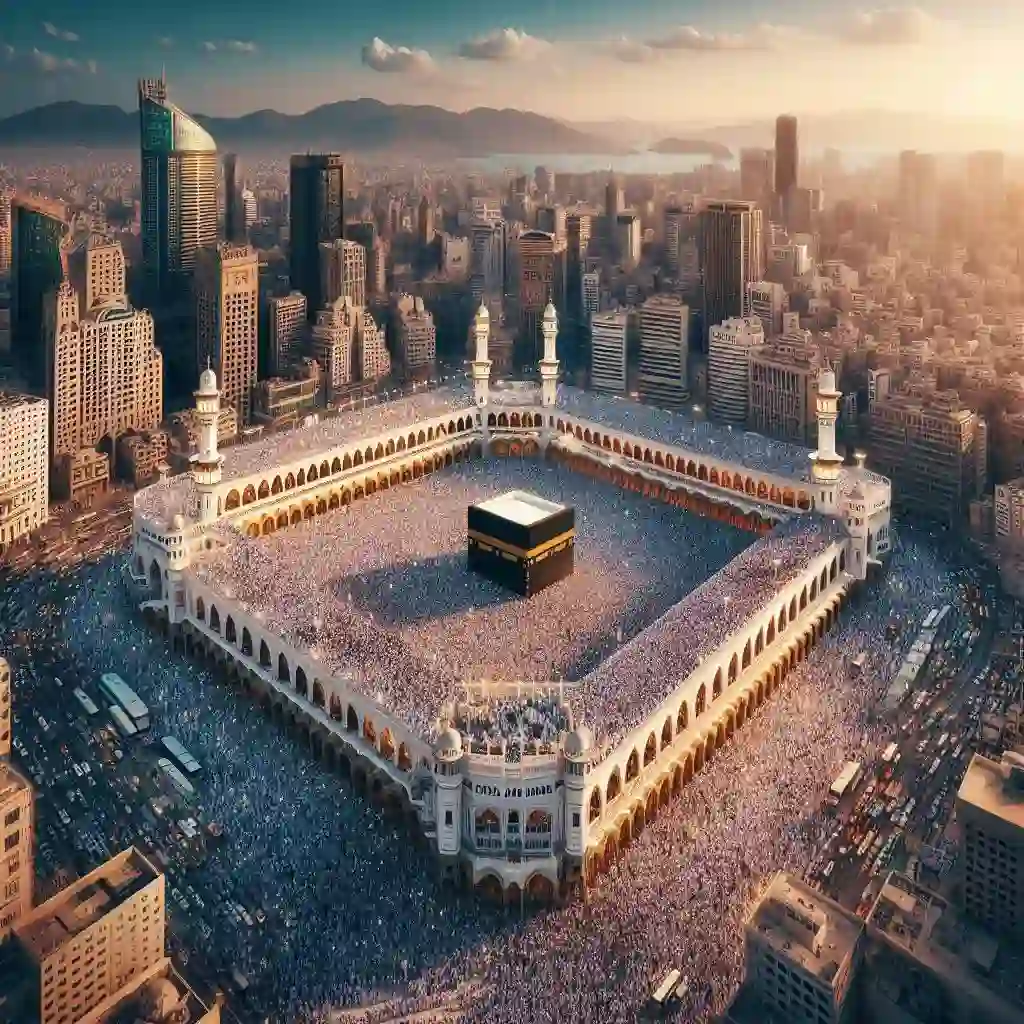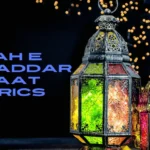Tajdar-e-Haram, a celebrated naat, holds a deep spiritual resonance that captures the hearts of millions. Its poetic verses are a heartfelt expression of devotion, love, and reliance on the Nabi-e-Kareem ﷺ (The Noble Prophet). Each line beautifully honors his unparalleled stature as Rahmat-ul-lil-Alamin (Mercy to the Worlds). This article dives into the Urdu lyrics of Tajdar-e-Haram, analyzing each verse, and explores the profound emotions and spiritual themes it embodies.
| Main Banda E Aasi Hoon Gunahgaar Banda Hoon |
| 12 Rabi ul Awal Naat | Eid Milad un Nabi |
| Mujhe Dar Pe Phir Bulana Lyrics in Urdu |
| ilahi Teri Chokhat Per Lyrics by Junaid Jamshed |
Introduction to Tajdar-e-Haram
Tajdar-e-Haram literally translates to “The Crown of the Sacred Sanctuary,” symbolizing the supreme reverence Muslims hold for the Prophet Muhammad ﷺ. The naat reflects themes of hope, supplication, and a longing for divine mercy, embodying titles like Habib-e-Ilahi (The Beloved of Allah), Khatam-un-Nabiyeen (The Seal of the Prophets), and Sayyid-ul-Mursaleen (The Leader of Messengers).
This lyrical masterpiece speaks to the spiritual connection between the faithful and their beloved Prophet ﷺ, invoking his intercession and blessings.
Detailed Analysis of the Lyrics
1. A Plea for Serenity and Madinah
Original Lyrics:
قسمت میں مری چین سے جینا لکھ دے
ڈوبے نہ کبھی میرا سفینہ لکھ دے
جنت بھی گوارا ہے مگر میرے لئے
اے کاتبِ تقدیر مدینہ لکھ دے
Analysis:
The opening lines express a fervent desire for a life of peace and guidance. The supplicant acknowledges the allure of paradise but considers a connection to Madinah—the city of the Prophet ﷺ—as the ultimate blessing. This reflects the centrality of Madinah in Muslim spirituality, symbolizing closeness to the Rahmat-ul-lil-Alamin.
2. Call for the Tajdar’s Favor
Original Lyrics:
تاجدارِ حرم ہو نگاہِ کرم
ہم غریبوں کے دن بھی سنور جائیں گے
Analysis:
The phrase Tajdar-e-Haram invokes the Prophet ﷺ as the sovereign of the sacred sanctuary. Here, the poet beseeches his compassionate gaze (nazar-e-karam), believing that even the downtrodden will find solace and prosperity through his intercession. This plea highlights the Prophet’s ﷺ role as the Intercessor of the Ummah and Hami-e-Baykasan (The Helper of the Helpless).
3. The State of Helplessness
Original Lyrics:
کوئی اپنا نہیں، غم کے مارے ہیں ہم
آپ کے در پہ فریاد لائے ہیں ہم
Analysis:
This stanza reflects the raw vulnerability of the seeker. Stricken by sorrow, the poet approaches the Prophet ﷺ‘s doorstep with unwavering hope. This represents the universal human condition of turning to the divine in times of despair and affirms the Prophet ﷺ as the Chosen One (Mustafa) and the ultimate refuge for the distressed.
4. Journey to Madinah
Original Lyrics:
مے کشو آؤ آؤ مدینے چلیں
تجلّیوں کی عجب ہے فضا مدینے میں
Analysis:
The imagery of traveling to Madinah invokes a spiritual awakening. Madinah, as the city of the Messenger of Allah, becomes a metaphor for divine illumination (tajalliyat). The stanza exudes a longing to immerse oneself in the peace and blessings of the Prophet’s ﷺ sacred presence.
5. Assurance of Divine Mercy
Original Lyrics:
آپ کے در سے کوئی نہ خالی گیا
اپنے دامن کو بھر کے سوالی گیا
Analysis:
These lines emphasize the unmatched generosity of the Prophet ﷺ. Those who approach him never leave empty-handed, illustrating his enduring mercy and compassion as the Habib-e-Ilahi. It affirms that the Prophet’s ﷺ intercession guarantees relief and fulfillment for all.
Tajdar e Haram lyrics in urdu
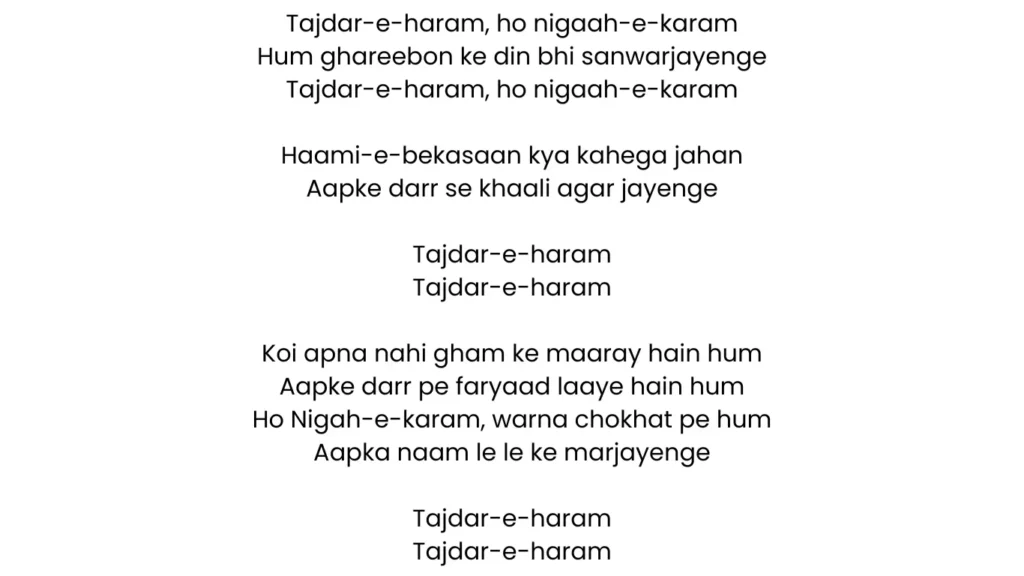
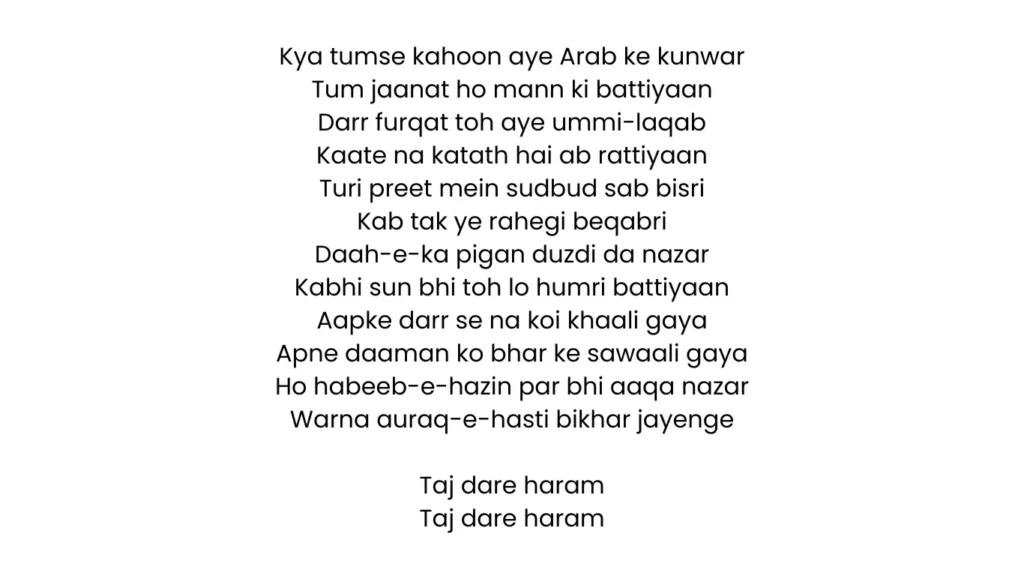
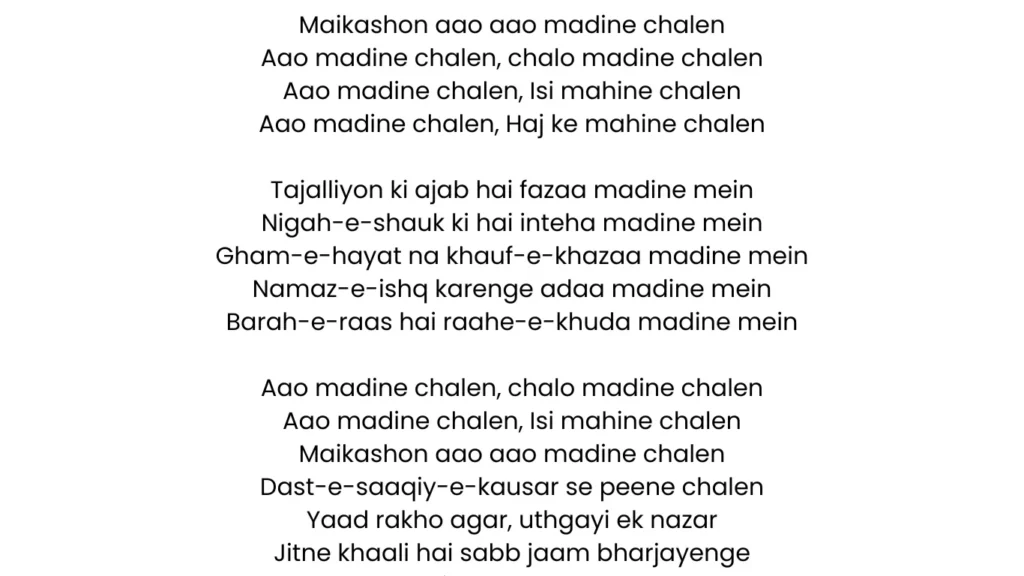
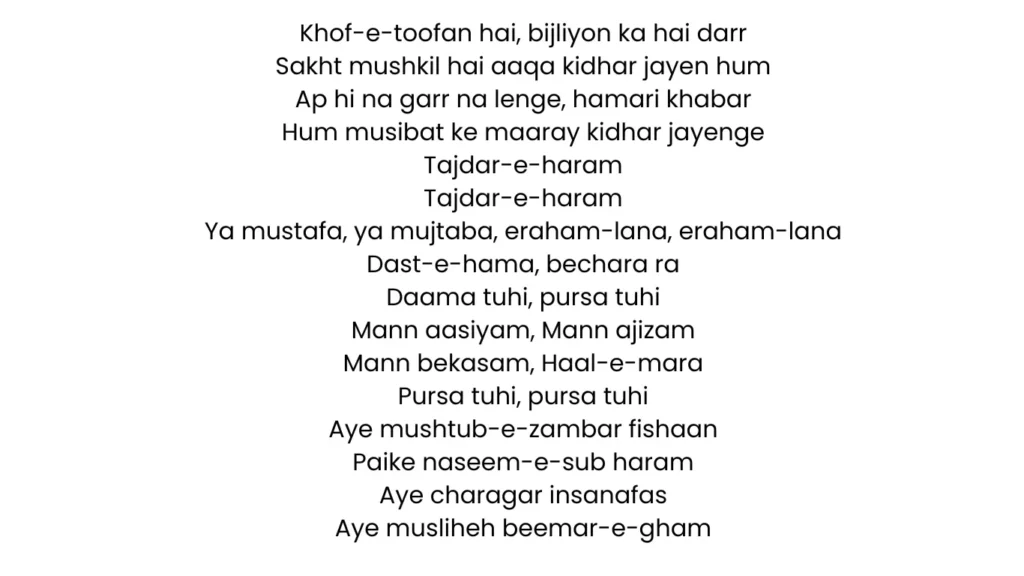
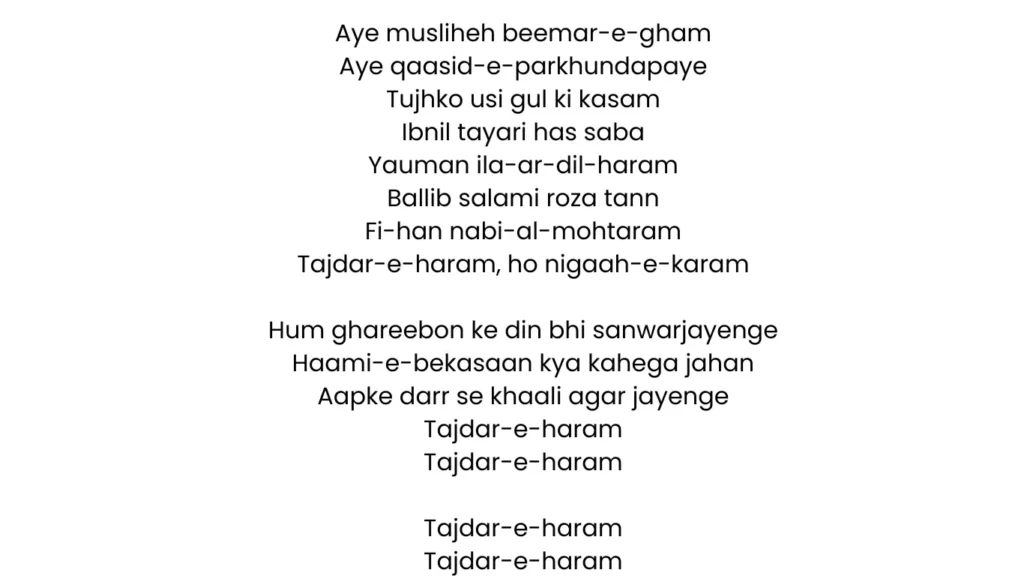
Related Themes in Tajdar-e-Haram
- Intercession (Shafa’ah): The lyrics reflect a strong belief in the Prophet ﷺ’s role as an intercessor, a recurring theme in Islamic spirituality.
- Hope Amid Despair: Through heartfelt supplications, the poet inspires hope for those facing life’s hardships.
- Connection to Madinah: Madinah is portrayed as a physical and spiritual destination, representing peace, love, and the essence of faith.
Conclusion
tajdar e haram lyrics is more than a naat; it is a soulful call to the Sultan-ul-Awliya (The Sultan of Saints), an affirmation of faith, and a source of solace for countless believers. Its timeless appeal lies in its deep connection to the Khatam-un-Nabiyeen ﷺ and its ability to evoke profound spiritual emotions.
The naat’s universal message of love, devotion, and reliance on the Prophet ﷺ continues to inspire and uplift the hearts of millions worldwide.
FAQs:
Tajdar-e-Haram translates to “The Crown of the Sacred Sanctuary.” It is a title used to honor the Prophet Muhammad ﷺ, emphasizing his revered status in Islam.
The main theme is love, devotion, and reliance on the Prophet ﷺ. It highlights his role as a source of mercy and intercession for humanity.
Madinah is significant as it is the resting place of the Prophet ﷺ. It symbolizes peace, divine blessings, and a deep spiritual connection for Muslims worldwide.
